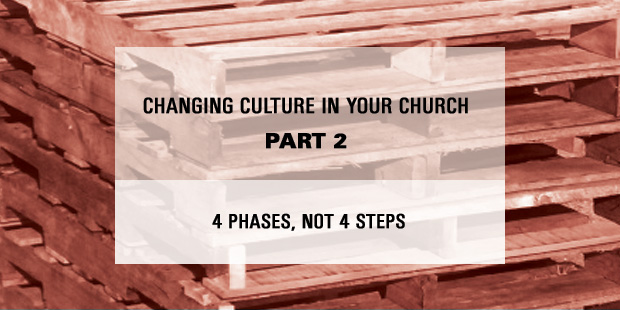
Changing Culture in Your Church, Part 2: 4 Phases, Not 4 Steps
Executives, leadership teams and entire organizations need more mature minds to deal with the increased complexity, uncertainty and inter-connectedness of our world.
CCL’s approach to changing culture is focused on growing bigger minds and fostering the thinking that allows for creative action in the face of complexity. Based on five principles, we use four broad, overlapping, reinforcing phases:
Discovery learning — determining willingness. What is the feasibility of entering the culture-change process? This is a mutual learning phase between CCL (as facilitators) and the client (as change agents and organizational leadership). It begins with an assessment of the current level of leadership culture and a look at the capability required by the business strategy.
Players’ Readiness — developing understanding. What are the long-term implications of integrating a new culture into the organization’s work? What is senior leadership’s ability to engage in the change process? It requires a commitment to participate in public learning — practices that many conservative institutions will decline.
Game Board Planning — framing the change process. What does culture change look like? How does interdependent leadership play out in business and leadership strategies, the learning process and organizational work targets? What are the beliefs and behaviors required? As senior leaders’ understanding of the change process grows, they are better able to frame the change challenge and engage other leaders.
Playing the Game — building capability. Once senior leadership has internalized the change work and discerned the way forward, they begin to move the new culture forward into the broader the organization. The same beliefs and practices that moved the leadership culture at the top are taught, practiced and required elsewhere in the organization.
The four phases are not a list of simple steps to take, cautions CCL’s John McGuire.
Many of the traditional serial, step-by-step change management methodologies regard human beings as things to be managed. But we’re not things. We’re complex beings with minds and imaginations and beliefs. We have to engage and participate in order to learn and change.
“We know this work is not for everyone,” McGuire continues. “But if senior leadership is fully engaged, they become adept at their own collaborative learning. Then the senior team is able to immerse larger numbers of leaders from across the organization and develops toward a critical mass for enterprise-wide change. Our goal is to eventually involve everyone in the organization in a learning process that creates trust, ownership and increasing forms of interdependence.”
Read more from CCL here.












